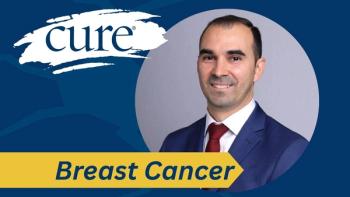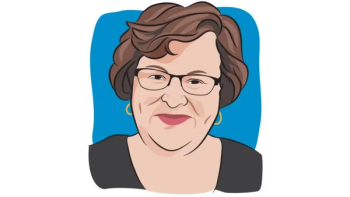
Radiation Therapy Eases Symptoms and Improves Targeting in Lung Cancer

Key Takeaways
- Radiation therapy targets lung cancer at all stages, damaging tumor cell DNA to inhibit growth and division.
- Palliative radiation focuses on symptom relief in polymetastatic disease, using shorter, gentler regimens.
Radiation therapy can treat lung cancer at all stages, easing symptoms, improving precision and minimizing side effects with modern techniques.
Radiation therapy is a precise, targeted treatment for lung cancer that can be used at every stage of the disease, according to Dr. Julianna Bronk during her presentation at the CURE Educated Patient® Lung Summit.
For a patient with lung cancer, radiation will damage the cellular DNA, which makes it impossible for tumor cells to grow and divide.
Bronk is the assistant professor in the Department of Thoracic Radiation Oncology, Division of Radiation Oncology, at The University of Texas MD Anderson Cancer Center, in Houston.
How Does the Disease Treat Metastases?
Palliative radiation therapy is used when cancer has spread to multiple areas of the body, known as polymetastatic disease. Rather than aiming to cure the cancer, this approach focuses on relieving symptoms and improving quality of life. Treatments typically involve shorter courses and lower doses of radiation compared with curative regimens, making them more gentle for patients.
In emergency situations, radiation may be used to quickly address tumor-related complications such as spinal cord compression or blockages caused by obstructive tumors. For patients with brain metastases, whole-brain radiation therapy is one option that can treat multiple tumors at once. However, it may lead to memory and attention difficulties lasting six to 12 months.
To help reduce these effects, whole-brain radiation with hippocampal avoidance can be used to spare the brain’s memory center. Another option is stereotactic radiosurgery, which delivers highly targeted radiation to a limited number of small brain tumors and tends to have minimal impact on cognitive function.
Radiation Therapy’s Psychosocial Impact
Adolescent and young adult patients with cancer (AYA) often face unique psychological challenges, including anxiety about treatment side effects, long-term health outcomes and the possibility of recurrence, according to Bronk. These concerns are heightened by the disruption cancer can cause during critical life stages, impacting education, careers, relationships, and independence.
To address these challenges, support services such as therapy, educational sessions, support groups and survivorship planning are recommended. Specialized programs like MD Anderson’s AYA clinic offer age-specific care for patients aged 15 to 39, helping them navigate both active treatment and life after cancer. The clinic also supports research focused on the psychosocial effects of cancer in this age group, ensuring care is informed by the experiences and needs of young people.
What is Radiation Therapy and the Steps to Receive it?
Radiation is a local type of treatment that targets the cancer cells directly with high-energy beams. It can be used alone or with other treatments like surgery and chemotherapy, and treatment is carefully planned to treat the tumor while it protects nearby healthy tissue.
The regimen consists of a sequence of steps to ensure the full potential for benefits. First, there is a consultation visit that is done in a multidisciplinary way. Second, if radiation will be the first step in treatment, a simulation or mapping scan will occur. Third, there will be quality and safety assurance checks. Fourth, radiation treatment delivery occurs, and then lastly, oncologist continue to monitor through follow-ups.
Important Questions to ask Your Radiation Oncologist
- What is the goal of radiation in my case?
- What side effects should I expect, and how can I manage them?
- What are the long-term impacts of radiation for someone my age?
- Are there advanced radiation options that are right for me?
- How will radiation fit with my other treatments?
Advancements in the Past 15 Years
One advancement in the past 15 years, according to Bronk, is Image guidance. During radiation therapy it uses advanced imaging tools — such as CT, PET and MRI scans — to help doctors target tumors more precisely. These scans can be integrated in real-time during treatment, allowing for adjustments based on tumor movement, including changes that happen as a patient breathes.
Another approach, stereotactic body radiation therapy, delivers high doses of radiation in fewer sessions — often over one to two weeks instead of the typical six. This method can be especially useful for treating lung tumors in specific locations and for patients with oligometastatic cancer, offering stronger tumor control with fewer side effects.
Additionally, proton therapy, uses charged particles that stop at a specific depth in the body, eliminating the exit dose of radiation. This helps protect healthy tissue, making it a valuable option for younger patients and children, as well as for treating tumors in areas that have already received radiation or that are near sensitive organs.
For more news on cancer updates, research and education, don’t forget to





